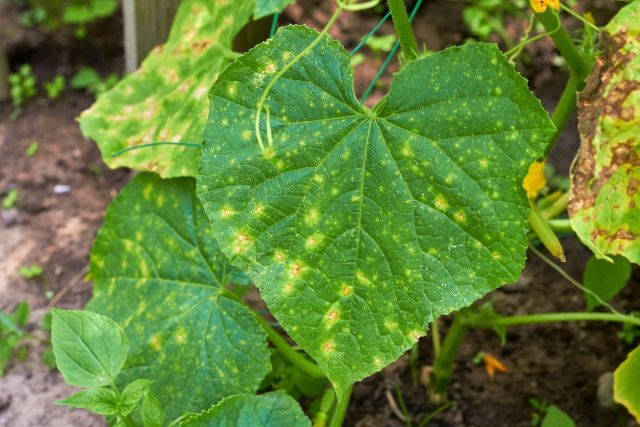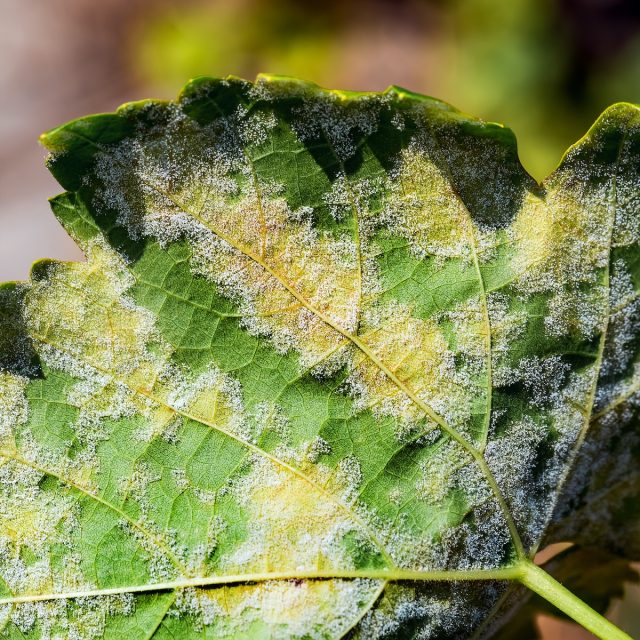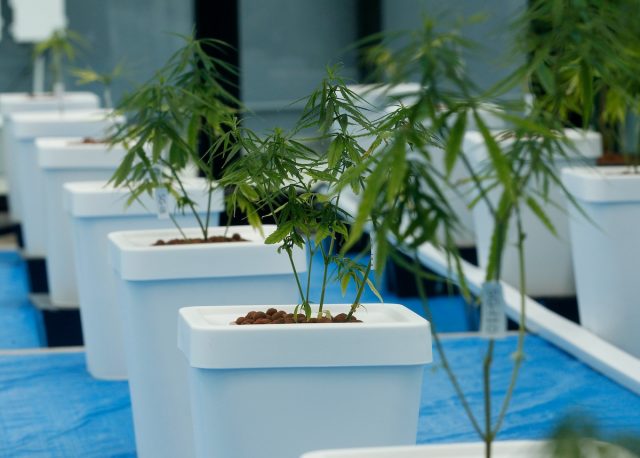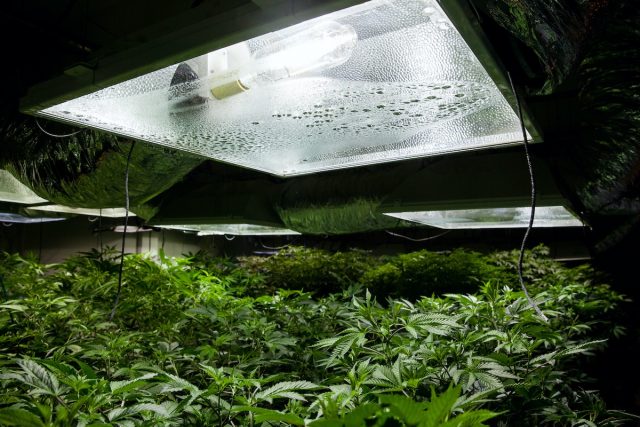How to prevent and treat downy mildew on marijuana
List of contents
The fungi that cause mildew usually appear when there is too much humidity, in those places where sunlight does not reach or when the plants are very close to each other. These microorganisms also affect other plants, since the disease known as mildew is caused by a large number of fungal species, both fungi themselves and the so-called fungoidal protists (molds that resemble true fungi, but in reality do not are related to them).
These are fairly specialized pathogens, with several host-specific species. This means that the type of fungus that infects one type of plant may not be the same species of fungus that infects another plant, even though the symptoms may appear to be the same. Downy mildew spores are easily spread through wind drift and air movement, although they can be carried by insect pests moving from plant to plant. As the spores settle on a host plant, they can germinate and infect in as little as eight to 12 hours if the plant or its leaves are wet.
Some of the most common pathogens that cause mildew are from the genus Peronospora, Plasmopara or Pseudoperonospora. Thus, in addition to damaging cannabis, they can affect plants such as potatoes, tobacco, pumpkins and especially vines, among other vegetables with commercial interest. In fact, the species of fungus Plasmopara viticola or vine downy mildew appeared in Europe around 1878. It was introduced by the French when they imported phylloxera-resistant vine varieties from America (an aphid-like parasitic insect). The trouble is that these strains were also hosts of the fungus, which today constitutes a serious problem for farmers.

Differences between mildew and powdery mildew
Downy mildew should not be confused with powdery mildew, which is another fungal infection common to cannabis plants. The main difference between the two is that while powdery mildew produces white, powdery-looking spots on the surface of leaves (as well as branches and fruit), downy mildew produces yellow spots on the surface and white on the back.
Powdery mildew and cannabis
Powdery Mildew is a pathogen fungi that attacks a vast range of plants, including cannabis. To know about this pest is crucial to effectively prevent it and treat it, so in this post you'll learn how to identify and treat a powdery mildew infection in marijuana plants.
Another difference is that downy mildew occurs during relatively cool (10-25°C) and humid (85% humidity) weather, unlike powdery mildew which occurs during warmer (15-28°C) and more humid weather ( for example, with a night humidity of 90-99%). Wet leaves can also be a sufficient microclimate to germinate spores and infect cannabis. Mildew can become a systemic pathogen that colonizes the entire plant, but fortunately it is not necessarily lethal with proper prevention and treatment.
Symptoms and causes of mildew
Mildew can be incubating on your plants for some time before it becomes noticeable. Unlike powdery mildew, downy mildew does not stay on the surface, but grows stealthily inside. This predator of vegetables can also remain on the plant for a long time without showing itself (especially during the winter) before becoming active and attacking when spring or summer arrives. This is why downy mildew can be so tricky: you never know when it's lurking and waiting for the perfect moment to pop up. This is why it is one of those fungal diseases that is best prevented from the beginning.
The disease produces the growth of hyphae (cylindrical filaments that make up the structure of the body of multicellular fungi) in the tissues of the plant and thus infect the leaves, stems and even the fruits. Due to this behavior, characteristic of endoparasites, we often cannot detect their presence until the aerial parts of the plant already show external signs of damage, which usually first appear on the underside of the leaves in the form of fuzzy growths or fluffy, whitish or bluish-gray fuzz (depending on the pathogen) on the underside of the leaves, signaling that the spores are already there.

In the presence of fresh irrigation water, rain or heavy fog, the spores will germinate within four hours. Below 5°C, spores do not germinate and die if exposed to temperatures of 27°C for 24 hours; therefore, dry, warm, clear days inhibit spore production.
Once the spores develop on the undersides of the leaves, after a while the tops of these leaves may develop small translucent pale green or yellow spots. If these spots are not treated, they leave a gray lesion in their wake, a symptom of necrosis, which will continue throughout the rest of the plant. In the following stages of the infection, the affected parts dry up and die, which results in an unexplained fall of the leaves and, therefore, in a reduction in the production and quality of our cannabis crop.
Mildew can also attack the stems, identifying itself as a very characteristic brown spot. It mainly affects non-woody stems, which can end up withering and dying. In the worst case, it can end up drying out the entire plant if the attack is on the central stem, so if left unchecked and weather conditions are not changed or addressed, eventually the plant will die.
Prevention of mildew in marijuana cultivation
To prevent mildew, it is necessary to know that it usually thrives in places where there is little sun (or poorly lit), in cold, humid, shaded and poorly ventilated areas; although it also does so due to excess nitrogen in nutrition, due to the abuse of chemical treatments or directly due to the genetic poverty of the plants. And as with many fungal diseases, preventative measures are preferable to treatment, so you'll want to keep an eye out for these factors.
Cleaning
While the weather cannot be controlled, the conditions that favor the formation of any mold can. Any new or existing planting area should be cleaned to remove plant debris. Many types of spores can overwinter in yard waste and emerge seemingly out of nowhere the following season. Some mildew-causing fungi can survive cold weather; others can be carried by wind and insects from warmer climates. This means removing dead leaves and always having an exquisite cleaning of your grow room or outdoor grow.

Sterilization
If you are growing indoors, there are also other disinfection parameters to keep mildew at bay. For example, try as much as possible to keep other people from visiting your plants. Don't let your pets roam around either to avoid bugs that could carry spores. Wash your hands well before and after entering the plantation. In the proximity of your girls, wear special clothes that you only use for them. And sterilize tools after each use; for example, pruning shears.
Space
If possible, you should take certain measures regarding plant spacing to prevent a mildew invasion. When you plant or transplant your plants, make sure they have enough space. If they are planted close together, the chance of downy mildew is significantly higher.
Ventilation
Making sure there is enough airflow between plants is critical to help avoid fungal problems of all kinds. For mature plants, be careful that lower branches and leaves do not touch the ground, removing all dead or damaged branches regardless of their location. For overly dense but healthy plants, do some regular pruning to ensure there is good air circulation between the branches. Indoors, placing an oscillating fan in the area can help, since the constant movement of air lowers the humidity and prevents the appearance of fungi. However, when mildew is already present it is best to avoid the air, which helps to spread the spores.
Irrigation
Since this disease thrives in humid environments, care must be taken when watering the plants, which should be done during warm parts of the day so that excess moisture has a chance to evaporate. Also keep in mind that foliar fertilization can cause an excessive level of humidity during the night, so it should be removed if necessary. In addition, avoid wetting the leaves when watering and protect them from dew water; or monitor if there is precipitation followed by warm days, as these conditions favor the germination of spores. For all these reasons, it is advisable to conscientiously control the environmental humidity and ventilation of our cannabis cultivation.

Preventive treatments to stop mildew
There are some natural treatments that are preventive against mildew. An example is the use of plant species with antiseptic properties, such as chamomile or garlic, dissolved in water and sprayed on the plants. Fungicides such as copper oxychloride and compounds known as dithiocarbamates are also commonly used. And organic preventives are also very effective, such as copper salts or Bordeaux mixture (slaked lime + copper sulfate), a traditional invention of French farmers to control parasitic fungal and bacterial infections. If prepared well, it is a fungicide that is resistant even to rain, as it adheres to the plant strongly.
Solutions to treat a mildew infection
To detect mildew in time, it is necessary, among other things, to regularly inspect the leaves and the lower parts of the plants. If any damaged area is seen, it will need to be removed and, if it is an entire plant or several, they should be moved away from the rest of the crop. In the event that we have not avoided infection with any of these preventive methods and we find symptoms that a cannabis crop has mildew, the only option to avoid destruction is to act quickly by applying a specialized product to combat this disease.
There are several types of fungicidal compounds on the market to kill mildew; while some act by contact, on plant tissues (such as Climoxanil, Chlortalonil or Imazalil) others are systemic (Metalaxil, Triadimenol or Myclobutanil), that is, they are applied only in an area where they are absorbed to be distributed later throughout the plant. In any case, it is very important to read the conditions of use of all these chemicals beforehand, since a bad application could cause damage to the crop, to people or not have the expected effect. This is why we always recommend using organic fungicides where possible.
With such a variety of practical and easy-to-implement preventative strategies, downy mildew doesn't have to be a scourge on your crop. However, if you lose the battle with any of your plants, make sure you eliminate them completely and don't let them decompose near the others. Another useful option could be to choose varieties with high resistance to fungus, such as our LSD Auto, the all-terrain Early Maroc or the classic Original Amnesia, plants that will ward off that nuisance that, for any grower, finding mildew in your garden means.






